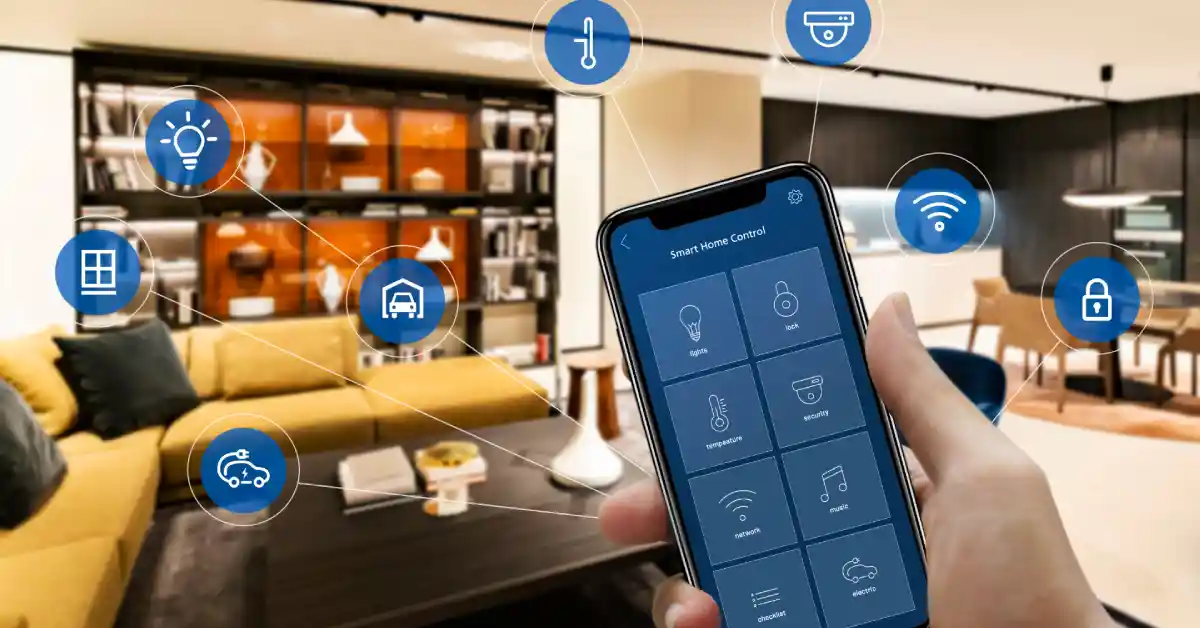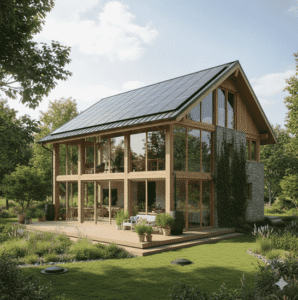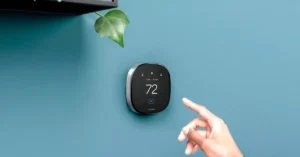Introduction: The Rise of Smart Home Security
In 2025, home security is no longer just about locks and alarms. Technology has transformed the way we protect our homes, with smart devices providing real-time monitoring, remote access, and automation that didn’t exist a decade ago.
From smart locks and alarms to AI-driven cameras and cybersecurity tools, today’s systems are designed not only to deter burglars but also to prevent water leaks, detect fires, and even lower insurance premiums. For homeowners, smart security and technology are about safety, convenience, and financial benefits.
What Is Smart Home Security? (Quick Answer)
Smart security and technology refer to internet-connected devices that protect a home through monitoring, alerts, automation, and remote management.
Key components include:
- Smart locks: Keyless entry with mobile or biometric access.
- Smart alarms: Wireless sensors for intrusion detection.
- Home monitoring systems: Cameras, motion sensors, glass-break detectors.
- Automation hubs & AI: Central control of devices via apps or voice assistants.
- Cybersecurity tools: Protection for connected devices from hackers.
Why Smart Security Matters in 2025
Today’s risks extend beyond burglars. Homeowners face both physical and digital threats. Smart systems mitigate these risks:
- Burglary prevention: Visible alarms, cameras, and locks deter intruders.
- Fire & water detection: Sensors detect hazards early, preventing major damage.
- Insurance savings: Insurers reward smart home technology with discounts.
- Convenience: Control everything from your phone or voice assistant.
- Cyber safety: With so many IoT devices, protecting networks is now essential.
According to a 2024 report by Statista, more than 68% of U.S. households now own at least one smart security device.
Core Devices in Smart Security
1. Smart Locks & Alarms
- Provide keyless entry and real-time alerts.
- Enable temporary guest access codes.
- Connect with sirens, motion detectors, and monitoring centers.
2. Home Monitoring Systems
- Indoor/outdoor cameras with AI motion detection.
- 24/7 monitoring services with emergency dispatch.
- Cloud storage or local video recording.
3. Automation & AI Integration
- Voice control with Alexa, Google, or Siri.
- Automation routines (e.g., lock doors, turn on lights when leaving home).
- AI-powered recognition (distinguishes pets from intruders).
4. Cybersecurity for Homes
- Firewalls and VPN-enabled routers.
- Automatic firmware updates for devices.
- Apps that detect vulnerabilities in IoT systems.
Financial Benefits: How Smart Security Lowers Costs
One of the most overlooked advantages of smart technology is its ability to lower insurance premiums.
- Discounts: Many insurers offer 5–15% off premiums for homes with monitored alarms, leak detectors, or smoke sensors.
- Loss prevention: Stopping a $20,000 water damage claim with a $50 leak sensor saves both the homeowner and insurer money.
- Resale value: Smart security adds perceived value when selling homes.
Example: A homeowner paying $2,000 per year in premiums could save $300 annually with comprehensive smart monitoring, offsetting the cost of devices within a few years.
Case Studies in Smart Security
- The Prevented Break-In: A homeowner in Chicago avoided a burglary when their smart camera identified suspicious activity. The system alerted police, who arrived before entry was made.
- The Burst Pipe Alert: In Boston, a connected water sensor notified a family of a pipe burst while they were away, preventing $15,000 in damage.
- Cybersecurity Saves Privacy: In California, a hacked baby monitor revealed vulnerabilities. After upgrading to a secure system, the family avoided further intrusions and gained peace of mind.
Challenges & Considerations
- Cyber risks: Poorly secured devices can be hacked.
- Costs: Initial setup (locks, cameras, hubs) can run $500–$2,000+.
- Subscription fees: Cloud storage and monitoring often add $10–$40/month.
- False alarms: Improper calibration can lead to unnecessary emergency calls.
- Privacy: Homeowners must balance safety with personal data protection.
Who Should Consider Smart Security in 2025?
- Urban homeowners: Higher burglary risk areas benefit from visible deterrents.
- Families: Parents use cameras to check on kids or elderly relatives.
- Frequent travelers: Remote monitoring ensures peace of mind when away.
- Tech-savvy homeowners: Those who value convenience and integration with other smart devices.
Key Takeaways
- Smart security combines locks, alarms, monitoring, automation, and cybersecurity.
- Benefits include safety, convenience, and insurance savings.
- Costs are offset by discounts and prevention of major losses.
- Risks include cybersecurity concerns and subscription costs.
- Adoption continues to rise, with more than 2/3 of households using smart security devices in 2025.




